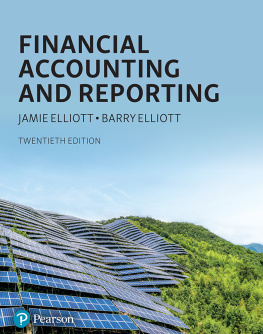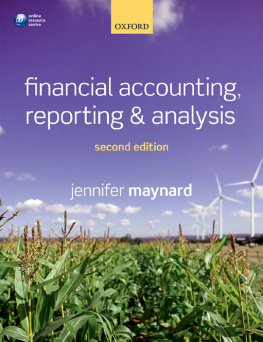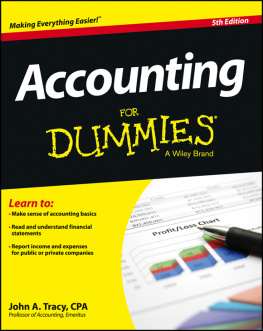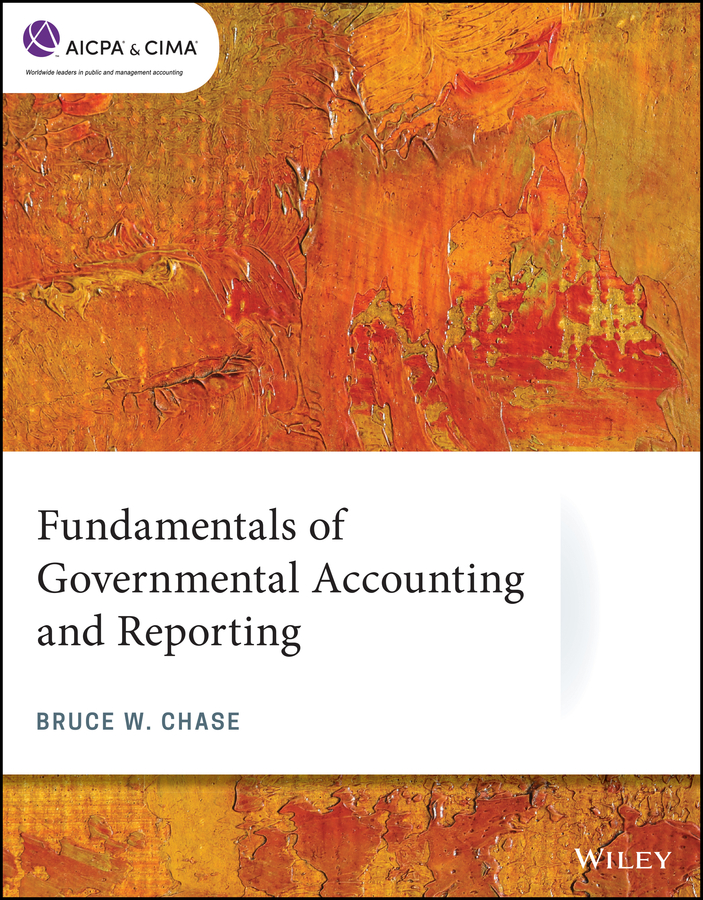Table of Contents
Guide
Pages

FUNDAMENTALS OF GOVERNMENTAL ACCOUNTING AND REPORTING
BY BRUCE W. CHASE, PH.D., CPA
Notice to readers
Fundamentals of Governmental Accounting and Reporting is intended solely for use in continuing professional education and not as a reference. It does not represent an official position of the American Institute of Certified Public Accountants, and it is distributed with the understanding that the author and publisher are not rendering legal, accounting, or other professional services in the publication. This course is intended to be an overview of the topics discussed within, and the author has made every attempt to verify the completeness and accuracy of the information herein. However, neither the author nor publisher can guarantee the applicability of the information found herein. If legal advice or other expert assistance is required, the services of a competent professional should be sought.
You can qualify to earn free CPE through our pilot testing program.
If interested, please visit https://aicpacompliance.polldaddy.com/s/pilot-testing-survey.
2020 Association of International Certified Professional Accountants, Inc. All rights reserved.
For information about the procedure for requesting permission to make copies of any part of this work, please email with your request. Otherwise, requests should be written and mailed to Permissions Department, 220 Leigh Farm Road, Durham, NC 27707-8110 USA.
ISBN 978-1-119-73666-0 (paper)
ISBN 978-1-119-73675-2 (ePDF)
ISBN 978-1-119-73673-8 (ePub)
ISBN 978-1-119-73676-9 (obk)
Course Code: 733983
FGAC GS-0420-0A
Revised: February 2020
Chapter 1
The Governmental Environment and GAAP
Learning objectives
- Recognize the unique aspects of the governmental accounting environment.
- Identify which organizations must follow GASB standards.
- Recognize authoritative guidance on generally accepted accounting principles (GAAP).
Governmental accounting versus for-profit accounting
The practice of state and local government accounting can be succinctly distinguished from that of for-profit accounting, which is already familiar to many of us. Several elements of governmental accounting are very distinct from for-profit accounting. One core difference is that the purpose of government is not to make a profit but to provide services to the citizenry. There are different users of the financial statements than in the for-profit sector. The accounting is different there is even a different standards-setting board, the GASB, which typically issues new rules each year. Like the FASB, however, the GASB is subject to the auspices of the Financial Accounting Foundation (FAF).
This course focuses on the fundamentals of governmental accounting. Governmental accounting is the composite activity of analyzing, recording, summarizing, reporting, and interpreting the financial transactions of governments.
Governmental environment
Key environmental differences between government and business
The state and local governmental environment is different in several ways from the business environment. These differences influence financial reporting objectives. The GASBs white paper, Why Governmental Accounting and Financial Reporting Is and Should Be Different, identifies the following five environmental differences between governments and for-profit businesses:
- Organizational purposes. Businesses are in the business of making money. The purpose of governments is to enhance or maintain the well-being of citizens by providing public services. Many of these services are provided with no direct relationship to how much recipients pay. For example, a local library is supported by tax revenue, not by fees charged to the people who actually use the library.
- Sources of revenue. One difference between government and business is their revenue streams. Governments receive substantial revenue from nonexchange transactions, such as taxes and grants. Taxes are provided by involuntary resource providers. The primary source of revenue for businesses is voluntary exchange transactions.
- Potential for longevity. The legal structure of the government is also different from that of a business. Each state has its own requirements pertaining to the roles and responsibilities among the different levels and branches of government. Because governments have the ability to tax, they rarely go out of business. This longevity is reflected in a long-term view in financial reporting.
- Relationship with stakeholders. Citizens delegate government operations to elected officials. The public has the right to hold the government to a higher standard of accountability for raising and spending of public funds. Accountability says that these elected officials must provide information about both stewardship and interperiod equity, which addresses a question: Are current-year revenues sufficient to pay for services provided that year or will future taxpayers be required to assume the burden of paying for services long since provided?
- Role of the budget. Control over the level of taxes and the spending of those resources is achieved by budgets legally adopted by elected officials. Demonstrating accountability with budget authority is a key objective of governmental financial reporting.
Knowledge check
- Which statement is accurate regarding the governmental environment?
- The state and local governmental environment is different from business in a number of ways, and these differences influence financial reporting objectives.
- Few governments resources come from taxes.
- The organizational purpose of a government is identical to a business.
- Governments are often concerned with going out of business.
- Which statement accurately describes the relationship between the government and its stakeholders?
- The primary source of revenue for a government is voluntary exchange transactions.
- A similarity between government and business is how resources are provided.
- Governments are accountable to citizens and taxpayers and must provide them information on how financial resources are used.
- Budgets are rarely legally adopted by elected officials.

Exhibit 1-1: Key environmental differences between government and for-profit organizations
 | Organizational purposes |
 | Sources of revenues |
 | Potential for longevity |
 |












 Exhibit 1-1: Key environmental differences between government and for-profit organizations
Exhibit 1-1: Key environmental differences between government and for-profit organizations